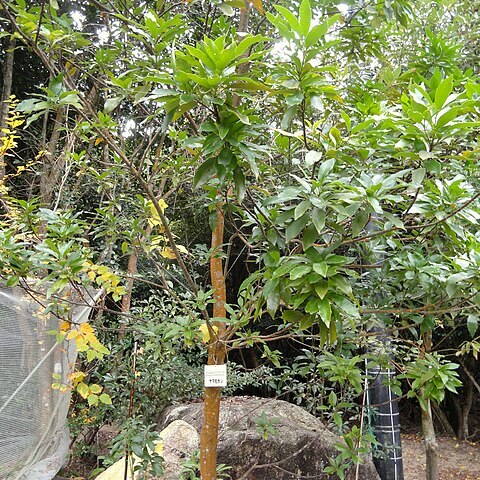A shrub or tree. It grows 4-20 m high. The branches and leaves are smooth. The leaf stalk is 0.5-1.5 cm long. The leaf blade is oval and 5-12 cm long by 2.5-5 cm wide. It is papery or slightly leathery. The base is wedge shaped. There are a few teeth near the tip in young leaves. Leaves taper to a short tip. There are 6-7 pairs of veins. The flower racemes are in the axils of leaves. They are 8-14 cm long. The flowers are whitish or yellow. The fruit is narrowly oval and 1-1.5 cm long by 0.8-1 cm wide. It is bluish black.


